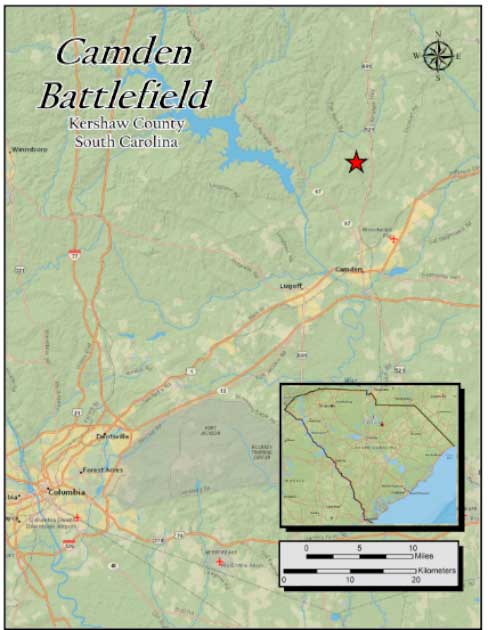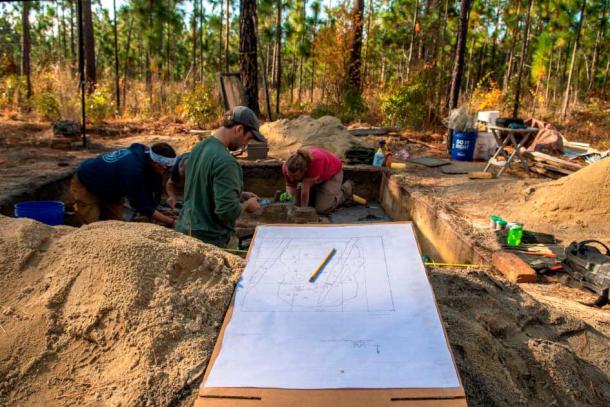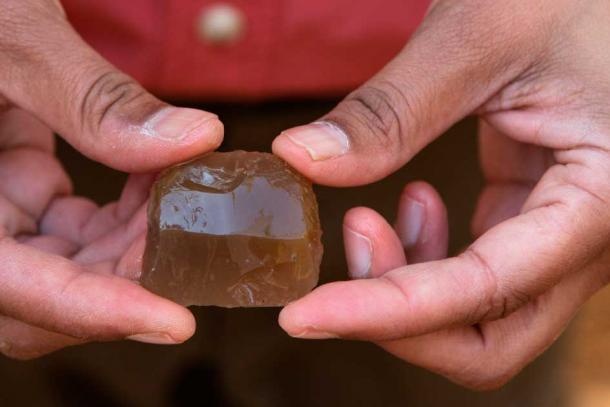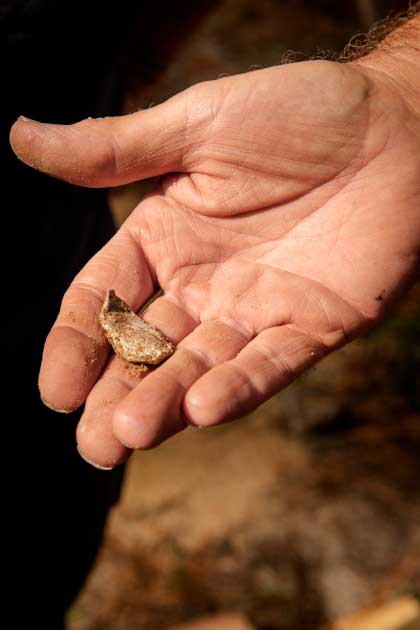
Excavations at the Battle of Camden Site Unearth 14 Revolutionary War Victims
On November 11 the South Carolina Battleground Preservation Trust issued a press release announcing an important discovery related to the American Revolutionary War. While excavating at the site of the Battle of Camden, which took place on August 16, 1780, archaeologists from the University of South Carolina’s Institute of Archaeology and Anthropology unearthed the skeletal remains of 14 individuals who had died in that ferocious battle more than 240 years ago.
Almost all of the newly unearthed bodies belonged to men who had fought on the American side in that contest, which represented an early setback for the Patriot forces that were striving to free their fledgling country from British rule.
“These young men demonstrated their allegiance in an intense battle for liberty,” stated South Carolina Battleground Preservation Trust CEO Doug Bostick. “We have a responsibility to honor their sacrifice by ensuring their remains are protected in perpetuity and their stories of bravery are shared.”
- Sybil Ludington: Unsung Heroine of the American Revolutionary War
- Revolutionary Era Log House Found Hidden in US Building

Location of the Camden Battlefield. (South Carolina Battleground Trust)
Forensic Explorations of the American Revolution
The skeletal remains were found buried in a series of shallow graves, some just six inches below the surface of the earth. The excavations that produced this remarkable discovery began in September, and the skeletons were carefully and artfully removed from their resting places over the course of an eight-week period.
“This discovery is particularly significant to the history of our state and nation,” exclaimed Dr. Steven D. Smith, a University of South Carolina/Institute of Archaeology and Anthropology archaeologist who co-led the excavation team. “This is a rare opportunity to examine and analyze a large sample of Revolutionary War soldiers to get information about their health and diet, age, gender and compare the forensic data to the historic record.”

Archaeologists cleaning Continental burials. Excavation unit plan in foreground. (Sarah Nell Blackwell / South Carolina Battleground Trust)
The University of South Carolina archaeological team is being assisted by forensic anthropologists affiliated with the Richland County Coroner’s Office, who have the expertise necessary to perform a most thorough and comprehensive post-mortem examination, regardless of how long ago the deceased might have been buried.
At present, the scientists are seeking to retrieve such data using X-rays and strontium isotope analysis to examine the skeletons down to the minutest detail. They hope to uncover information that will reveal exactly how the soldiers died, whether from battlefield wounds, diseases, or infection. They also want to learn more about what life may have been like for members of the Continental Army and the volunteer militiamen who fought on the Patriot side during this calamitous battle that took place in the southernmost reaches of American colonial territory.
Many more questions will be answered when the results of DNA tests come in, which is expected to happen next summer.
In the meantime, the archaeologists and the forensic experts assisting them will have until April of 2023 to complete their studies of the skeletons. After that the remains will be reburied on the now peaceful grounds where the Battle of Camden was fought, near the small city of Camden in the Columbia, South Carolina metropolitan area. The reburial ceremony will be quite elaborate and will offer a history lesson for attendees and those watching on livestream about the Battle of Camden and about other Revolutionary War battles that took place on South Carolina soil.

Archaeologist displays a French musket flint recovered from one of the Continental burials. (Sarah Nell Blackwell / South Carolina Battleground Trust)
Remembering the Ill-Fated Battle of Camden
Based on the initial examination of the remains and some of the items found buried with them, the archaeologists believe that 12 bodies are Continental Army soldiers from either the Maryland or Delaware divisions, both of which were active in South Carolina. The remaining two bodies were apparently British fighters, one a Loyalist from North Carolina and the other affiliated with the British Army’s 71st Regiment.
“People visit battlefields like Camden, Cowpens and Kings Mountain every day and don’t often consider that they are walking in unmarked cemeteries,” commented Dr. James Legg, the University of South Carolina/ Institute of Archaeology and Anthropology archaeologist who co-led the excavations at Camden along with Dr. Smith.” The dead are still there. The work we are doing honors their sacrifice by shedding light on details that are not yet documented in the historical record and by providing them with decent marked graves for the contemplation of battlefield visitors.”
In this case, what the archaeologists are documenting are facts about men who fought in a battle that represented a disaster for the Patriot side.

Flattened British musket ball recovered from the remains of a Continental soldier at the Battle of Camden site. (Sarah Nell Blackwell / South Carolina Battleground Trust)
By 1780 British forces had already captured the vitally important port city of Charleston, South Carolina. From there, British general Charles Cornwallis dispatched heavily armed troops to set up defensive garrisons at various locations, including near the settlement of Camden in the central part of the state.
It a was foolhardy strategy to attack the British at Camden in 1780, given how firmly entrenched they were in that part of the south. But Continental Army general Horatio Gates tried it anyway, leading an exhausted collection of militiamen and regular army divisions down from North Carolina to try to dislodge the British from their advantageous position.
Unsurprisingly, the worn-down Continental and militia forces were no match for the British. More than half the Revolutionary forces, or 1,900 men, were either killed or seriously wounded in the ill-fated Battle of Camden, while the British suffered only 70 casualties and had only 245 wounded.
A good portion of the Revolutionary militiamen simply fled to avoid being slaughtered. But members of the Maryland and Delaware divisions stood fast and suffered enormously for their dedication to the Patriot cause.
The nature of the burials discovered during the recent excavations highlights the nature of the battle. One of the makeshift graves included five bodies, two others had two and three bodies respectively, and the remaining four graves had one body each. None of the burials was more than about six inches deep.
“It was a disposal process,” Dr. Legg told the Charleston Post and Courier. “The Continentals fought like Vikings in this battle, but they were overrun.”
Honoring the Truly Forgotten Veterans
Eventually, the tide of the war turned in the south, especially after the impetuous General Gates was replaced by General Nathanael Greene, who proved to be a more prudent and strategically effective commander. In 1782 the British were actually forced to abandon their former stronghold at Charleston, in response to a string of Continental army victories under General Greene that put the British in an untenable situation.
While it was these later military actions that made the decisive difference, the South Carolina Battleground Preservation Trust wants to make sure that the men who fought in the earlier Battle of Camden are not forgotten. This is why the Trust has decided to mark the reburial of the bodies in April with an official ceremony of remembrance, modeled after ceremonies saluting those who died in more recent wars.
“When these young men marched into the darkness on that summer night in 1780, they did so out of love for their country despite the consequences that may befall them,” Doug Bostick explained. “Our intent is to lay them to rest with the respect and honor they earned more than two centuries ago.”
Top image: Archaeologists prepare burial excavation unit for removal of remains at the Camden Battleground site. Source: Sarah Nell Blackwell / South Carolina Battleground Trust
By Nathan Falde















